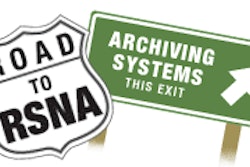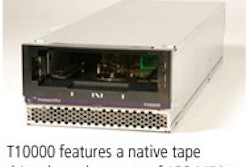SAN DIEGO - Other medical specialties that make heavy use of nonradiological images -- such as ophthalmology, pathology, and dermatology -- could take a cue from radiology in how to effectively move into a digital imaging environment, according to a presentation yesterday at the 2006 Healthcare Information and Management Systems Society (HIMSS) meeting.
Radiology began adopting filmless imaging in the late 1980s and early 1990s, but early efforts were hampered by a lack of standards governing radiology image data. This made it nearly impossible for image data to be distributed and reviewed on equipment made by different vendors.
The arrival of the DICOM standard in the early 1990s changed all that, and since then radiology has made great strides in adopting digital image management. The result has been major efficiency and patient care benefits, according to Wendt. For example, the University of Wisconsin, which implemented a full PACS in 2000, saves some $200,000 annually in film costs and $1.5 million in savings related to moving film jackets around the healthcare enterprise.
Medical specialties outside radiology could realize similar savings, but they're stuck at about the same stage as radiology was in the early years. There are no standards for managing nonradiological image data, for example: If you have an endoscope from Olympus, you have to buy a viewer from Olympus to see the images, he said.
Despite the potential challenges, Wendt strongly recommends that healthcare enterprises extend their digital image management activities into nonradiological areas. Facilities that do so will realize a wide range of benefits similar to those enjoyed by radiology, he said.
At the University of Wisconsin, the hospital was so satisfied with its PACS experience that it decided to link nonradiological modalities into the PACS. The hospital now has 14 ear, nose, and throat (ENT) rooms outfitted with digital image capture devices that are hooked into the PACS, as well as four microscopes retrofitted to produce images in the DICOM format that the PACS archive understands.
What are the benefits of PACS outside the radiology realm? Some of them are similar to those in radiology, such as:
- Reducing film production and transportation costs
- Coping with the increasing volume of images being produced
- Being able to compare a patient's prior images without having to search through hard-copy folders
- Enabling better communication between physicians of different specialties by helping them compare radiology and nonradiological images that are stored in a single archive and accessed using the same interface
- Supporting workload shifting, enabling certain types of images to be more efficiently sent to specialists at remote locations rather than being read by generalists at the central facility
It's possible for a facility to use an electronic medical record (EMR) system to manage nonradiological images, but Wendt favors PACS because the latter is more adept at handling advanced techniques that image-intensive specialties use, such as comparing prior images.
"When the dermatologist has an image of the lesion that was on the right hand, he doesn't want to search through the EMR that has 35 JPEGs dumped into (it) with such relevant names as 'P001258,'" Wendt said. "He wants to be able to have a prior image of the right hand sitting next to it. PACS understand this; EMRs don't."
That brings up another issue involved in managing images filmlessly outside radiology -- the lack of a standard like DICOM that can embed relevant patient demographic information into each image. At the University of Wisconsin, the hospital worked with PACS developer McKesson of Atlanta to develop a digital image capture device for optical modalities that enables clinical users to annotate on the image the part of the body where the image came from. If you don't capture this information at the time of image acquisition, it's highly unlikely the clinician will be able to recall it later, Wendt said.
But some specialties -- ophthalmology in particular -- have climbed on the standards bandwagon and are working with the Integrating the Healthcare Enterprise (IHE) initiative to develop a DICOM-like standard. "Hopefully the nightmare will be coming to an end in the near future," he said.
Like radiology, image overload is also a phenomenon occurring in other disciplines -- in some cases to an even greater degree. Some single-slide pathology images can be over 20 GB, while 10 seconds of video from an endoscope at 200 frames per second can take up 200 GB of storage space. Even radiology's large archives might stumble on such massive studies, and advances in storage technology will be needed before such data can be fully incorporated into PACS, Wendt said.
Ultimately, healthcare facilities should view digital image management for nonradiological modalities as an investment that will not just reduce costs but also improve the quality of care they deliver, which itself has a financial benefit, Wendt believes.
"Anything that you can do to share images is going to really have a high dollar value, because anything that improves time to treat will cut your costs, improve the chances of a successful outcome, and attract patients, because adopting best standards attracts patients," he said. "If you are better at what you do than your competitor, people will come to you. And consumers are pretty savvy."
By Brian Casey
AuntMinnie.com staff writer
February 15, 2005
Related Reading
Software facilitates inclusion of nonradiological images into PACS, January 16, 2006
Copyright © 2006 AuntMinnie.com



















